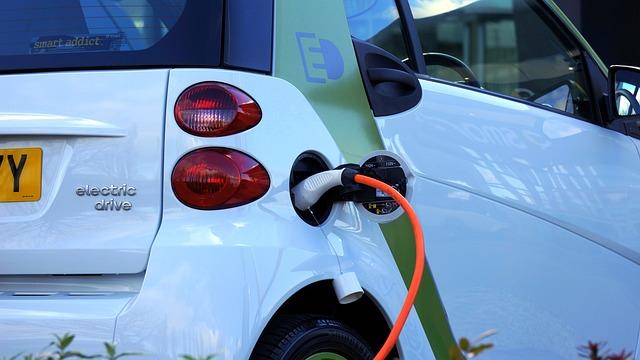
A few weeks ago my husband sent me an article investigating a viral claim that a Californian managed to get a brand-new Tesla for less than $20K. As I’d been subtly (not so subtly) hinting at my desire to go electric for years, I knew this was probably my best shot at getting an EV sometime this decade. Anyway, long story short, we’re now the proud owners of an EV, but not a Tesla! Here are some of the things to consider when you’re on the hunt for an EV:
There are a lot of good incentives out there, but you have to know where to look.
One of the main reasons we held off on getting an EV is that we simply could not filter out all the noise. Most of us have heard about the Federal Government’s $7,500 EV tax credit, but did you know that you can also qualify for incentives from California, your county, and even your utility provider?
“Well, that’s great, but how do you find them?” you might be wondering. California makes it easy for you with its Drive Clean CA incentive finder! Make sure to check this site out before making your purchase as incentives vary according to where you live, what vehicle you’re purchasing, and even the car you’re replacing.
Besides this, make sure to ask your dealer! But also, make sure you check Drive Clean CA! Our dealer was able to apply an incentive from our local utility provider; however, he had no idea that California also offers its own rebate program.
There are a lot of very good EVs out there – and many of them are not made by Tesla.
For many of us, cars (and their brands) help to define us. It’s well established in the marketing world that cars play a significant role in how we define ourselves (for better or worse).
Where am I going with this? Well, throughout this process, my husband and I learned one thing – we were most likely not going to get a Tesla, at least not right now. Don’t get me wrong, Tesla is doing great things for the EV industry, helping to tangibly reduce emissions with not only its vehicles but also the infrastructure it’s creating. It’s just that it doesn’t quite fit what we are looking for at the moment.
In my opinion, this illustrates that the market is maturing. Nearly every major automobile brand now offers an EV and new EV brands are (seemingly) popping up every day. So do your shopping and enjoy the process! You might be surprised with the brand you end up choosing.
EVs are more powerful than you’d expect.
If you’ve ever driven a golf cart, you’d know that those things can fly! No worries, EVs are no slouch to their gas-guzzling counterparts. Always remember to drive safely!
An electric car is super easy to charge.
“So, how do you charge it?”, my sis-in-law asked. It was like looking in the mirror at myself a mere two weeks ago. “You plug it in,” my husband replied. Yep, classic sibling banter.
When you become a new EV owner, there are a lot of terms/acronyms you’re going to need to familiarize yourself with. Simply put, yes, you can simply plug your car into a normal 120v outlet and charge it! It will take forever, but it works! This is what is referred to as level 1 charging.
If you want to charge faster, you’ll need something similar to what your dryer is most likely plugged into (i.e. 240v). You’re going to need to get permits if you want to install another 240v outlet in your house, but it’s probably worth the effort if you plan on driving your EV all over the Bay Area (such as to our community events!). This is what is referred to as level 2 charging. It basically gives you a somewhat reasonable rate of charge without taking too much of a toll on your battery.
So what are all those charging stations you see popping up in parking lots? Those are either level 2 charges or level 3 chargers! Level 3 chargers are the fastest, but not the best for the health and durability of your battery.
Charging technology and infrastructure is improving by the day, so there’s no need to get too technical here.
The gist of it is this – to charge it, simply plug it in.
It’s actually pretty difficult to charge (in public).
The San Francisco Bay Area made history recently as the first major metropolitan region where 50% of new vehicle registrations were EVs or hybrids. While that’s certainly great news for the environment, it also means that it’s that much harder to find publically available chargers!
While we’re waiting for our permits to be approved for our level 2 charging home solution, we figured, why not use one of the many charging stations popping up around town?
Great idea, right? In concept, yes, but practically? No.
From experience, there is almost always at least one charging station that’s not working. And we’ve been to a lot of charging stations recently.
There are also a lot more people to compete with. Charging etiquette is seriously becoming a thing, and we find ourselves fuming at the fully charged car that has been hogging the charging outlet for the past 3 hours.
Public charging can be great when you find an available spot, but sometimes, it’s really not worth the headache. Occasionally, when you’re lucky enough to plug in, it certainly makes the shopping experience that much sweeter (especially when the charging is free!).
If you’re going to go this route (and you most likely will need to at some point), try downloading the PlugShare, CharePoint, and Electrify America apps.
It’s totally worth the trouble.
Having an EV has changed our lives, mostly for the better. As to whether or not it makes financial sense, stay tuned for our next piece in this series that takes a serious look at what it costs to own an EV in the Bay Area.
Besides finances, from a value standpoint, my husband and I feel a weight lifted off us. Gas-fueled cars are a major source of air pollution, and after living in smoggy Asia for over a decade, they are really just something we can do without. Similar to most of us SF Bay Area parents, we are striving for a better, more sustainable future for our little ones.



















